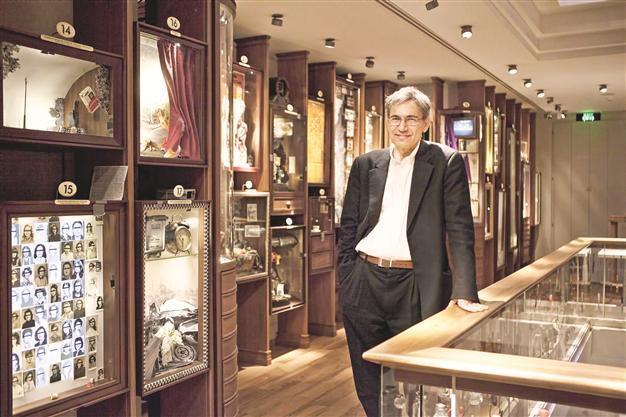Orhan Pamuk’s Museum of Innocence in London
ISTANBUL - Hürriyet Daily News

Orhan Pamuk.
The Museum of Innocence, in Istanbul’s Çukurcuma district, was inspired by Turkish Nobel laureate Orhan Pamuk’s 2008 novel by the same name. The museum has now been nominated for the most coveted prize in museum design: the London Design Museum’s Designs of the Year awards.The Designs of the Year awards, which have been described as the Oscars of the design world, showcase the most innovative and imaginative designs from around the world. The awards will honor exceptional designs from the past year across seven categories: architecture, digital, fashion, furniture, graphics, transport and product.
Award nominees in an exhibition
Following the announcement that Pamuk and the architects who worked with him on the museum – İhsan Bilgin, Gregor Sunder-Plassmann and Cem Yücel – were being considered for the award, an exhibit from the museum will be on display alongside the other nominated designs at the London Design Museum. The exhibit, which opens today, will continue until July 7.
The winners of the award will be selected by a jury and announced to the public on April 17.
From the inception of the project in the 1990s, Pamuk had conceived of his novel and museum together. The novel, which is about lost and unrequited love, describes life in Istanbul between 1950 and 2000, through memories and flashbacks centered around two families.
The museum, which finally opened in April 2012 in an old building in Istanbul’s historical Çukurcuma neighborhood, is a visual representation of the love story of Kemal and Füsun, the main characters in the novel. Light shines down from above, illuminating Füsun’s “belongings,” such as 4,213 cigarettes that Füsun smoked, while each story of the museum reflects a period in Istanbul’s past. In the attic visitors find the room in which Kemal wrote his novel over many years. The room contains the manuscript for the novel, and, like each room of the museum, was designed by Pamuk.
The museum presents what the novel’s characters used, wore, heard, saw, collected and dreamed of, all meticulously arranged in boxes and display cabinets.
The museum was originally meant to open simultaneously with the book’s publication, but was beset with delays. It took Pamuk, working closely with a team of artists and product designers as well as architects, another four years to complete the project.
A piece of the museum, titled “Istanbul’s Streets, Bridges, Hills and Squares,” will be displayed at the London Design Museum.
The box, which reflects the 14th part of the novel, reflects the harassment that Istanbul’s women face on the street. “I have dreamed of this box for this section of the novel for three years and even before finishing the novel, I established it like a theater stage,” wrote Pamuk in the museum’s catalog.
Pamuk won Turkey’s first, and so far only, Nobel prize when he took home the award for literature in 2006 for his semi-autobiographical work “Istanbul: Memories and the City.”
















